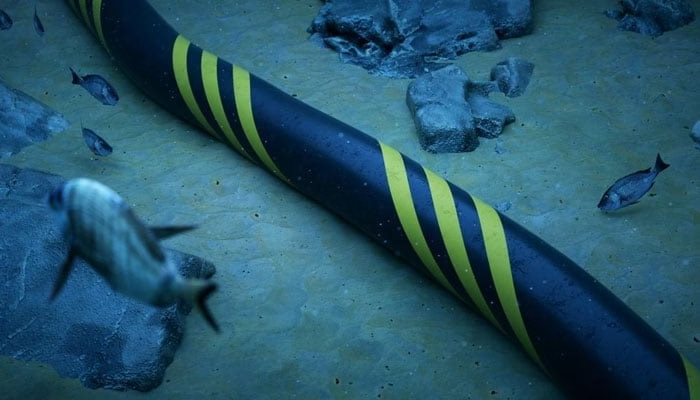Internet users in Pakistan could face potential disruptions due to a fault in one of the key submarine cables connecting the country to international networks. The Pakistan Telecommunication Authority (PTA) has confirmed the issue and is actively working to resolve it, but concerns remain about its impact on broadband and internet services nationwide.
The Submarine Cable Fault
The fault has been detected in the AAE-1 (Asia-Africa-Europe-1) submarine cable near Qatar. This cable is a crucial component of Pakistan’s internet infrastructure, forming part of a network of seven undersea cables that connect the country to global internet traffic. The PTA has indicated that this fault could result in slower internet speeds and potential outages for users across Pakistan.
Impact on Internet Users
Internet and broadband users may already be experiencing disruptions in connectivity due to the fault. The AAE-1 cable plays a significant role in handling data traffic between Pakistan and other regions, and its malfunction can lead to increased load on the remaining cables. As a result, users might face slower browsing speeds, buffering during streaming, and delays in online communication.
The PTA has reassured the public that repair teams are working diligently to address the issue. The authority is closely monitoring the situation and coordinating efforts to minimize the impact on users.
The Importance of Submarine Cables
Submarine cables are the backbone of global internet connectivity. These undersea cables transmit vast amounts of data across continents, enabling seamless communication, streaming, and business operations. Pakistan’s reliance on seven such cables underscores their critical role in maintaining robust internet services. Any disruption in one of these cables can have a ripple effect, straining the network and affecting millions of users.
The AAE-1 cable, in particular, is one of the longest submarine cable systems, connecting Asia, the Middle East, and Europe. Its strategic importance makes it a vital link for Pakistan’s digital infrastructure.
Repair Efforts and Challenges
Repairing a submarine cable fault is a complex and time-consuming process. It involves deploying specialized ships equipped with tools to locate and fix the fault under the sea. Factors like weather conditions, the depth of the cable, and the extent of the damage can influence the duration of the repair.
The PTA has assured that repair teams are working tirelessly to restore the cable to full functionality. In the meantime, alternative measures are being explored to redistribute internet traffic and reduce the strain on other cables.
Lessons from Past Disruptions
This is not the first time Pakistan has faced internet disruptions due to submarine cable faults. Similar incidents in the past have highlighted the need for a more resilient internet infrastructure. Diversifying connectivity options and investing in additional cables can help mitigate the impact of such faults in the future.
The Role of PTA in Managing Connectivity
The Pakistan Telecommunication Authority plays a crucial role in ensuring uninterrupted internet services. From monitoring cable systems to coordinating with international teams for repairs, the PTA is at the forefront of managing connectivity issues. The authority’s swift response to the current fault reflects its commitment to minimizing disruptions for users.
How Users Can Cope with Disruptions
While the repair work is underway, internet users can take certain steps to cope with potential disruptions:
- Limit Bandwidth Usage: Avoid activities that consume high bandwidth, such as streaming in HD or downloading large files.
- Use Alternative Connections: Consider mobile data as a backup if broadband services are affected.
- Schedule Tasks: Plan data-intensive tasks during off-peak hours when the network is less congested.
- Stay Informed: Keep an eye on updates from the PTA regarding the progress of repairs.
Looking Ahead
The submarine cable fault near Qatar is a reminder of the vulnerabilities in Pakistan’s internet infrastructure. While repair efforts are underway, the incident highlights the need for long-term solutions to enhance connectivity and reduce reliance on a limited number of cables.
Investments in additional submarine cables, satellite internet technology, and improved infrastructure can strengthen Pakistan’s digital ecosystem. Such measures will not only ensure uninterrupted internet services but also support the country’s growing digital economy.
As repair teams work to address the fault in the AAE-1 submarine cable, internet users in Pakistan may experience temporary disruptions. The incident underscores the critical importance of submarine cables in maintaining global connectivity and the need for a resilient digital infrastructure. The PTA’s proactive approach and ongoing efforts to resolve the issue reflect its dedication to ensuring reliable internet services for all.



